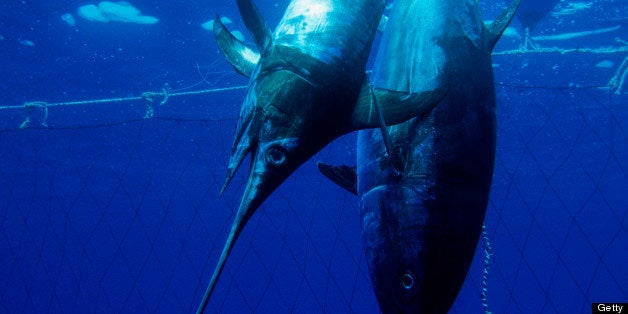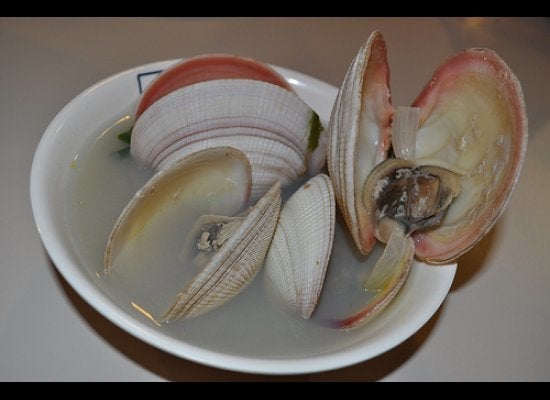
No fish has inspired as much controversy over the past several years as the bluefin tuna. Sushi lovers, especially in Japan, love the fish's fatty flesh and pay top dollar for prize cuts -- but environmentalists say that the world's hunger for o-toro has pushed the three species of bluefin around the world to the brink of extinction. Global fisheries managers have carefully negotiated the demands of these two wildly divergent (and highly vocal) constituencies by placing strict limits on fishing of bluefin tuna, and enforcing those limits to the best of their abilities.
Yet all their hard work is imperiled by two huge factors: illegal fishing and bycatch. Work has been done in recent years to prevent illegal fishing. But a big batch of data released by the National Oceanic and Atmospheric Administration (NOAA) this week [pdf] shows how big a problem bycatch remains.
Specifically, NOAA revealed that about a quarter of the United States' 2012 annual quota of about 1,000 metric tons of the fish was wasted on bluefin tuna that was accidentally caught in a practice known as pelagic longline fishing. Fishermen string miles of baited hooks along wires [pdf] strung between buoys in the open ocean, in an effort to catch swordfish and yellowfin tuna. But other species -- including bluefin tuna, but also turtles and dolphins -- sometimes take the bait and are caught as "accidental bycatch" by the pelagic longline fishermen. Bluefin tuna need to swim to breathe, so they sometimes die after being hooked in this process. According to the new NOAA data, these wasted tuna weighed a total of 239.5 metric tons in 2012, up about 70 percent from 2011.
This increase in accidental bycatch has prompted NOAA to suspend longline fishing for bluefin tuna for the remainder of 2013, starting on June 25. The restriction won't keep bluefin tuna from being accidentally caught by pelagic longline fishermen, whose activities are not being restricted -- rather, if they are caught, the fishermen are no longer allowed to keep them on board. They have to throw them back into the sea, dead or alive.
NOAA is expected to revise its regulations on bluefin tuna fisheries this summer. Its new rules may limit certain types of pelagic longline fishing that present a high risk of bluefin tuna bycatch.

